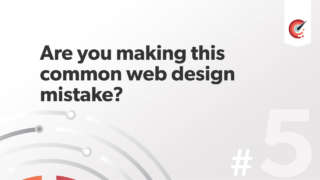
5 common usability mistakes that frustrate users
- No Home button
- Hiding live email addresses
- Call to action
- Underlining links
- Break up long text areas
1.)No Home button
Home buttons are required on websites as backup. When a user struggles to find what they want or get lost within the site, they will start again and revert to the home page to start their journey again. A home button is an extremely important part of the site.
2.)No live email addresses
A live email address is a mailto a href link, when the user clicks upon it, it will open up their default email client and allow them to send an email directly. Web users try and hide them for one main reason – to prevent spam The first method to hide them is using characters such as my[dot]name[at]mydomain[dot]com. To every day computer users such as ourselves we would have no problem converting this into a workable email address. However to an every day web user they may well become confused with this method. Its also very error prone and just not a reliable way of hiding a live email address. The second method is to use just a web form and no email address. There are a few problems and differences between a web form and sending an email direct.
- Users feel a lot more comfortable and confident using email : they are used to using it
- Users can't send attachments, some exceptions.
- They have a receipt of communication
- Users don't really care if you get spammed, they came to the site to complete a task
Does this mean to ignore web forms? Absolutely not, the best solution is to give the user to choice of a web form and an email address they can click on and send an email direct. Its all about thinking putting your users first and giving them the easiest ways to contact you.
Solution: Use a live email address
3.)No call to action:
Every page on a site should have a clear call to action. In the main content area there should be a link that follows it giving the user a specific thing to do. The call to action can be a number of things including:
- Buy a specific product
- More information, testimonial page
- Read related blog article
- A video
- A special offer
- A contact us page
4.)Underline links
Theres a convention on the web that underlined text is a link and it should be followed. Certainly, in most cases and in particular links with content such as paragraphs. This allows the link to stand out and shout “Hey, I'm a link, click me”. Without a link its not apparent that the link is actually a link.
Few extra details about underlined links:
- Not all links need to be underlined. For instance navigation links are not always required to be underlined. Navigation areas are normally detached from the rest of the site by white space or colour for instance. Since its then clear that its navigation users are not expecting the links in that section to be underlined.
- Using the CSS property border-bottom is a better method than text-decoration:underline for underlining links. It gives more space and doesn't cut of characters such as “p's”, “g's” and “y's”
- More traditional usability experts suggest that links should always be blue, but its going too far in my opinion. Blue may not fit in with the brand colours or the design. If you can make the links blue and its in, then do so but it's not something to follow in every situation.
5.)Break up long text areas
Users on the web scan generally content rather than read word for word. It's a matter of time, the user has come on the site to complete a particular task. They don't have time to read every last word on your site. Therefore breaking up large text areas makes their job of finding specific content easier. There are 3 things you can do to make the content more scan-able.
- Use of headings preceding paragraphs or blocks of text. By doing this allows the user to pick out specific key words and information they are after. They can then read the following information for more detailed information.
- Using lists breaks up content into much more readable content.
- Steve Krug famously says in his book, Don't Make Me Think: “Reduce half of the content, then reduce by half again” Removing content makes the content remaining to stand out more and have more impact.










